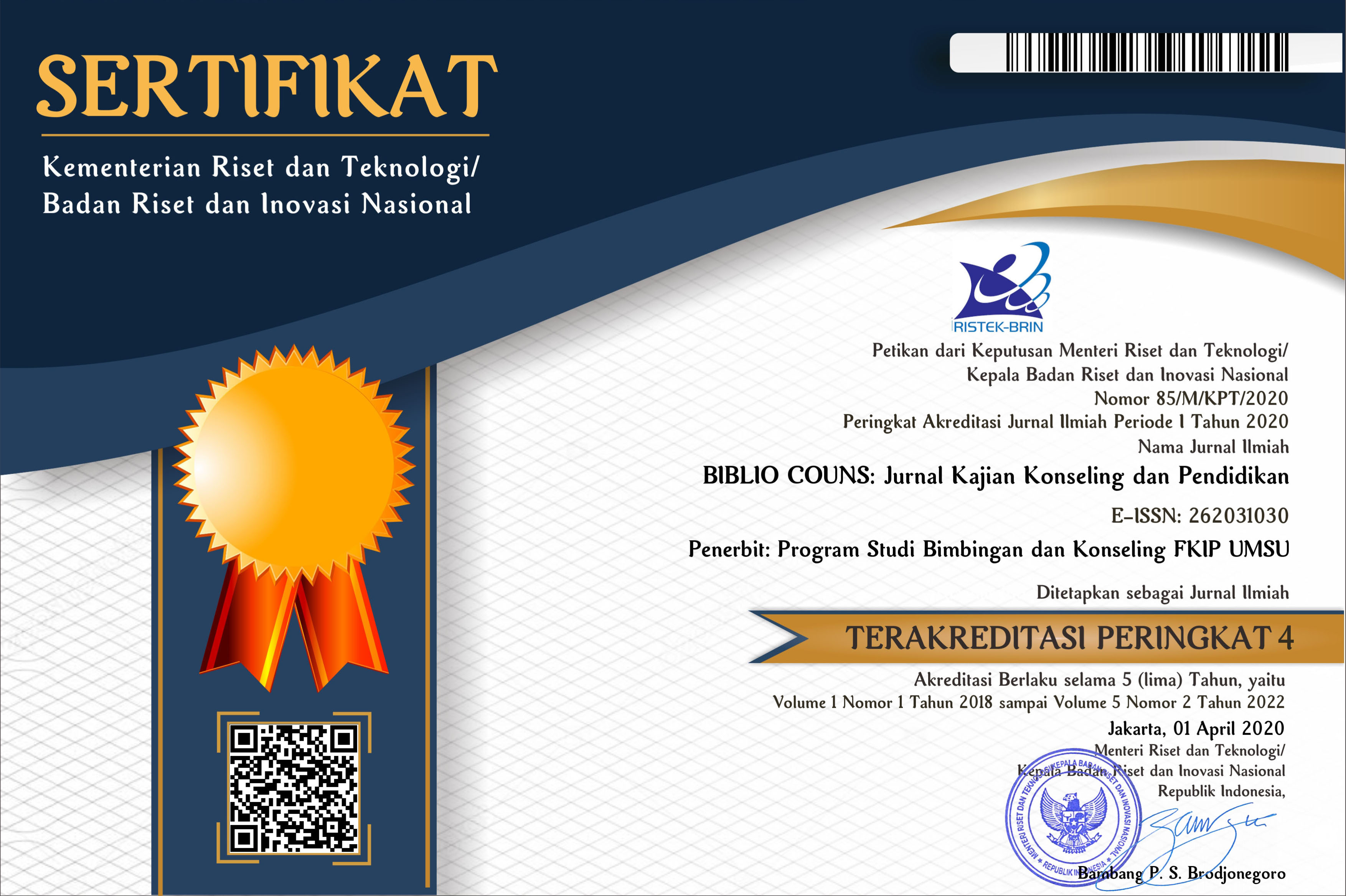Student Empathy Resilience Design Model in Group Counselling Learning
Abstract
Keywords
Full Text:
PDFReferences
Ahmadi. (1999). Psikologi Sosial. Jakarta: Rineka Cipta
Astuti, I. (2019). Desain Pembelajaran Dalam Perspekktif Konstruktivistik. Pontianak: IAIN.
Chairuman, A.W. (2020). Model Desain Sistem Pembelajaran Blended. Jakarta: UNJ Press.
Corey G, Marianne S. C, dan Gerald, (2006) . Group Prosess and Practice.: Australia: Thomson Brooks/Cole.
Corey,G (1995) Theory and Pratice Group Counceling Forth Edition. California:Brook/Cole Publishing Company.
Desmita. (2009) Psikologi Perkembangan Peserta Dididk, Bandung: Rodakarya
Grotberg, E.H., (1999). Taping Your Inner Strength: How to Find the Resilience to Deal with Anything, Oakland, CA.: New Harbinger Publications, Inc.
Gustafson,K.L dan Branch,R.M. (2002) . Survey Of Instructional Development. New York: Eric Syrauce University.
Jacobs, ED E. et al. (2012). Group Counseling : Strategi and Skills. California: Brook/Cole Publishing Company.
Prayitno. (2012). Jenis layanan Bimbingan dan Konseling Kelompok: Dasar dan Profil. Jakarta:Galia Indonesia.
Reivich, K., Shatte A. (2002). The Resilience Factor seven Key To Finding Your Inner Strength And Over Coming Lifes Hurdles. New York : Three Rivers Press
Ritzen, George Douglas J. Gooman. (2007).Teori Sosiologi Kontemporer. Jakarta: Kencana Lenada Media Group.
Rusdi.M. (2018) . Penelitian Desain dan Pengembangan Kependidikan. Depok: Rajawali Pers. PT Raja Grafindo Persada.
Sholichah, I.F., Paulana, A.N., & Fitrya, P. (2018) Self-Esteem dan Resiliensi Akademik Mahasiswa. Proceeding National Conference Psikologi UMG, 191-197
Sugiyono. ( 2015). Metodologi Penelitian Pendidikan. Bandung: Alfabeta.
Wibowo. M.E. (2017). Konseling Perkembangan (edisi revisi). Semarang: UNNES PRESS.
DOI: https://doi.org/10.30596/bibliocouns.v5i1.6602
Refbacks
- There are currently no refbacks.
Biblio Couns: Jurnal Kajian Konseling dan Pendidikan
Universitas Muhammadiyah Sumatera Utara
Kampus Utama
Jl. Kapten Muchtar Basri No.3, Glugur Darat II,Medan
Sumatera Utara-20238
E-mail: jbcons@umsu.ac.id



